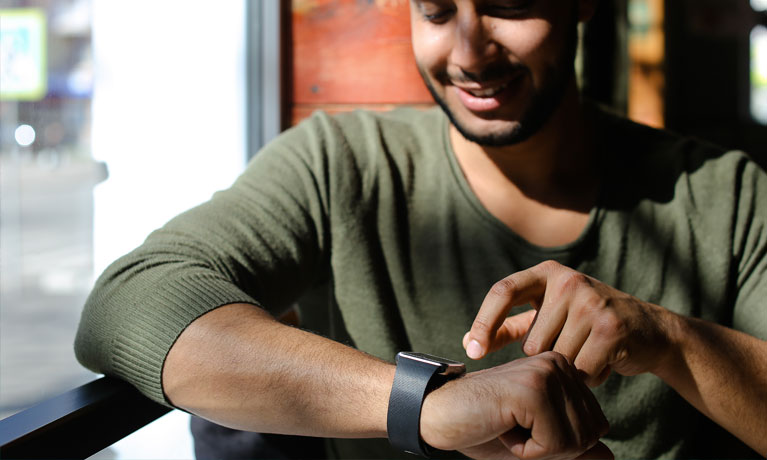By Dr Maxine Whelan, Celine Brookes-Smith and Natalie Bisal
This article has been re-published from the original article on The Conversation.
With gyms closed and millions cooped up and restless at home, it’s little wonder that “healthtech” is now being billed as the next big battleground over which the likes of Microsoft, Apple and Google will fight. Chief among their products are wearable devices that measure your heart rate, your step count, and dozens of other data points that keep you informed about your physical health.
The increasing prevalence of these devices is to be welcomed. They help people track their workouts, setting quantifiable goals that can help them stay fit and healthy.
But the introduction of wearables that measure our mental health – like employee mood tracker “Moodbeam” – should be greeted with a more cautious optimism. Such devices will, after all, hold some of our most personal data – and constantly logging our emotional state might even be counterproductive in helping us achieve better mental health.
The wearables boom
Wearables are now commonplace in people’s lives. The wearable technology market is currently valued at US$37 billion (£26.9 billion) and is forecast to grow to include 1 billion connected wearable devices by 2022. People value the ability to measure their health and performance, using “health indicators” like their heart rate to better plan workouts and fitness routines.

Wearables contribute to the “quantified-self” movement, which sees us use technology to collect and process more and more data about our lives in the hopes of optimising our behaviour. This movement has already spread into the workplace, with office workers now granted data showing them how long they spend sitting down during working hours. And now, companies on the hunt for the next big health indicator have landed on our mental health – a particular concern to emerge during the ongoing pandemic.
Leading this new development in wearable tech is the Moodbeam device, which is worn on the wrist. Rather than passively tracking physical health indicators, users of the Moodbeam device are encouraged to press one of two buttons – yellow for “OK” and blue for “not OK” – when they register a mood change, or at scheduled times of the day. The idea behind the device is to add emotional wellbeing to the established health indicator list, processing how our moods fluctuate across a typical day.
Linking to a smartphone application, Moodbeam gives an overview of “mood moments”, which aim to help users spot trends and patterns in their mental health over time. Users can also enter journal entries as well as pressing the wearable’s buttons, and this may facilitate greater self-awareness and better emotional literacy – helping users come to terms with bad habits, or moments in their days which make them feel “not OK”.
At the moment, Moodbeam is primarily marketed as a digital solution for employers to check in with their remote-working staff – effectively giving workers an opportunity to register their emotional upsets when working from home. But this system raises worrying questions about privacy and employer surveillance – and that’s before we’ve properly studied whether mental health wearables might actually cause more harm than good.
Instructive or invasive?
Our previous research has dealt with mood monitoring. We looked at how people living with chronic obstructive pulmonary disease responded to a monthly mood questionnaire as part of a wider digital intervention. We found that more than half of participants reported rising mood scores across 12 months.
This finding would not have been captured had mood not been recorded as a data point, highlighting the benefit of monitoring mood in patient groups. Even more frequent monitoring, with devices like the Moodbeam, may help people better understand their emotional wellbeing, while also providing additional insights to inform mental health interventions on the part of medical professionals.
On the other hand, we know employees haven’t responded well to having their feelings monitored in the past. In a focus group exploring perceptions towards wellbeing wearables in the workplace, truck drivers expressed scepticism about whether employers truly cared about their health – seeing it as a “tick box exercise” more for the benefit of employer reputation than employee wellbeing.
It’s easy to imagine wearables like Moodbeam causing employees anxiety and provoking fears about “what happens next” after they press a Moodbeam button – especially the “not OK” one. It’ll be important for companies to be clear about how such data will be used, setting out policies that explain how they’ll respond to negative feelings in their workforce. Privacy remains a concern for Moodbeam data, which is currently shared at an individual level with employers.

Beyond the workplace, it’s unclear whether the “OK or not OK” approach promoted by Moodbeam is the right one for mental health monitoring. Emotionally literate individuals are able to understand and express a wide spectrum of emotions, many of which may resist grouping into a binary choice of “OK” or “not OK”. And, if users are constantly pressured to judge their emotions, logging some as negative could lead to negative mental health impacts. Put simply: feeling bad about feeling bad can make you feel even worse.
Moodbeam is yet to publish any data on user engagement and implementation. It’ll be important to see and examine this data, now that wellbeing trackers are looking likely to become another household health indicator – to determine if they’ll be helpful for users, or a sinister form of surveillance for employers.
In the meantime, companies deciding to employ wearables like Moodbeam must give careful consideration to what they do with mood data, and how they plan to use it to actively help their employees. And individual users should engage with this new technology with caution: it may help them map their moods more effectively, but it could also lead them to feel worse about their wellbeing in the long run.
https://www.coventry.ac.uk/cih




Comments are disabled